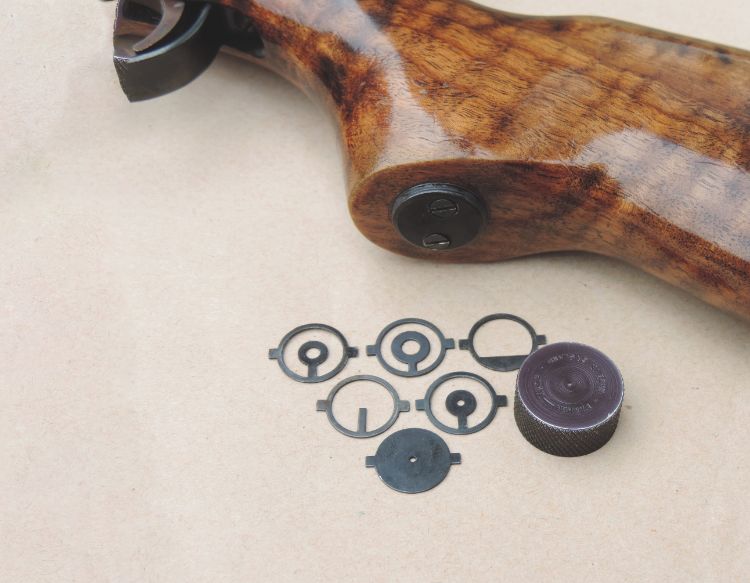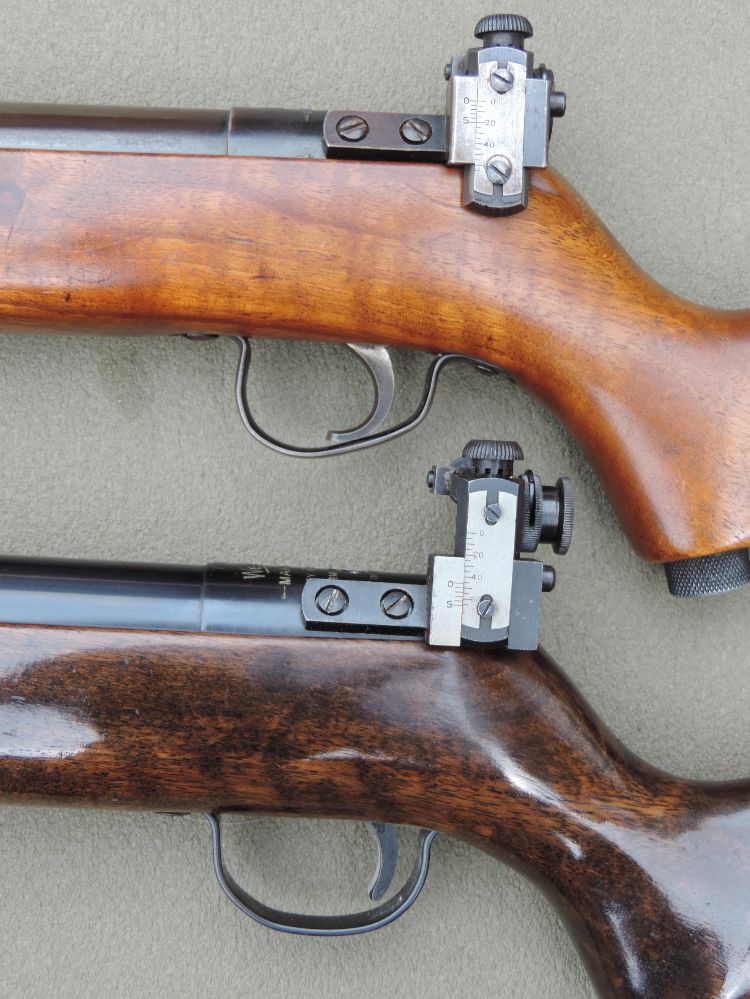John Milewski heads back to 1963 when Webley launched their Supermatch rifle
Around one in ten Webley Mark 3 air rifles were produced in .22 because most were bought for sporting rather than target use. However, Webley did cater for target shooters during the Mark 3’s lifetime by offering aperture sights as an option from as early as 1949 (Source: Webley price list dated Sept 1949). Webley catalogues illustrated the Parker Hale PH16M and could supply a brand new rifle with the sight fitted, the sight on its own, or if you sent your rifle to Webley, they would fit a PH16M to the trigger block for you. This sight was considered a sporting as well as target sight and I have used one in vintage competitions successfully in the past.
In 1963, Webley decided to offer a dedicated target air rifle based on the Mark 3, which was fitted with a Parker Hale PH17B aperture sight and a ramped tunnel type FS22a fore sight. No rear sight was deemed necessary, and the rifle was initially called the ‘Supermatch Club’ model in a December 1963 Webley Export Trade Price List. At this time, Webley were supplying their standard Mark 3 with a spot-welded telescope sight ramp and as this was also unnecessary on a target rifle, it too was omitted. Until this ramp became standard, Webley cylinders were stamped with the rifle’s name and company address, but the presence of the ramp resulted in these markings being moved back to the trigger block. The Supermatch was never stamped or marked as such, and the air cylinder was unmarked because standard Mark 3 stamped trigger blocks were used.
 A selection of spare fore sight elements can be kept in the box under the rifle’s pistol grip.
A selection of spare fore sight elements can be kept in the box under the rifle’s pistol grip.
BETTER THAN THE SUPERTARGET?
The Supermatch was renamed the ‘Supertarget’ in 1964 and cylinders were boldly stamped with the Supertarget name in large letters. There are minor differences between the Supermatch and Supertarget models, and I believe that the Supermatch would have made a superior target rifle to the Supertarget. For a start, the ‘second’ type trigger was fitted to the Supermatch, which can be identified through a forward curl to the base of the trigger. First-type triggers were copied from pre-war German Diana 45 units and offered a so-called ‘double pull’. These were only fitted to the first 6000 or so Mark 3 air rifles, until the second type took over in 1949. A third type, shorter trigger blade was introduced in 1966 alongside a redesigned sear. Unfortunately, on all of these examples I have evaluated, the minimum safe trigger pull weight resulted in a far heavier pull than the second type. A cosmetic difference is the profiled loading tap on the Supermatch, which is more attractive and also more expensive to machine than the later, parallelsided levers fitted to both the Mark 3 and Supertarget from 1965. Known examples of the Supermatch have been found in the 41000 serial number range.
 NUMBER CRUNCHING
NUMBER CRUNCHING
The appendix in ‘Webley Air Rifles’, by Chris Thrale, tells us that around 4000 Webley Mark 3 air rifles were made between November 1964 and December 1965, then around 3000 the following year. The serial number register is incomplete, but serial numbering had reached 44370 in November 1964, by which time the Supermatch had become the Supertarget, although cylinders were still not stamped with the name. Chris Thrale has confirmed the earliest marked Supertarget known to him is no: 47948. Taking the annual production figures of between three and four thousand into account, the Supermatch numbered 41695 would have been made during the latter half of 1963.
PERFORMANCE
Looks are one thing, so let’s move on to the test range to see if the Supermatch performs better than the later Supertarget. The first thing I did was change the ring fore sight element for a post, using the supply safely housed in the holder under the rifle’s pistol grip. Increasing the aperture size to one below the largest helped to let more light in, and after cocking the silky-smooth action, the first pellet was ready to be released. A gentle pressure on the single-stage trigger was all it took to discharge the rifle and an Excite flathead was on its way. Two more pellets followed the first and all landed in the same spot, six yards away.
The PH17B aperture sight was also intended for rimfire match rifles and was incredibly well made. One click will move the point of impact by approximately ¾mm at 10 metres, so after a few minor adjustments, I was placing pellets centrally with ease. Before I knew it, 15 pellets had landed centrally as I fine-tuned the sight, and not one landed outside of the ½-inch group that had formed. As I pondered the rifle’s performance at the end of testing, I found myself wishing Webley had retained the Supermatch Club trigger and sear on the Supertarget. This is on the basis that a match rifle deserves a decent trigger, and dare I say it, the only thing that slightly lets the Supertarget down is its unduly heavy trigger pull. The Supermatch is therefore worth seeking out for its slightly superior performance over the rifle it eventually developed into.